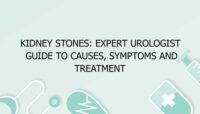Mumps in Children: Symptoms, Causes, and Treatment
Mumps in children is a viral infection caused by the mumps virus, which is a member of the paramyxovirus family. Though once a common childhood disease, mumps has become less prevalent due to widespread vaccination. Despite this, it is still essential for parents and caregivers to understand the symptoms, causes, and treatment options associated with mumps in children. This article provides a comprehensive overview of mumps, addressing key aspects to ensure effective management and prevention.
Understanding Mumps in Children
Mumps is a contagious disease that primarily affects the salivary glands, particularly the parotid glands located near the ears. The mumps virus spreads through respiratory droplets from coughing or sneezing and can also be transmitted through direct contact with saliva or contaminated surfaces. The decline in mumps cases over recent decades is largely attributed to the widespread use of the measles, mumps, and rubella (MMR) vaccine. However, mumps can still occur, especially in communities with lower vaccination rates.
Transmission and Contagiousness
Mumps in children is highly contagious. The virus spreads through respiratory droplets when an infected person coughs or sneezes. It can also be transmitted by sharing utensils, cups, or other objects that have come into contact with an infected person’s saliva. The contagious period typically begins a few days before the onset of symptoms and continues for up to five days after the swelling of the salivary glands appears. This high level of contagiousness underscores the importance of maintaining good hygiene practices and vaccination coverage.
Symptoms of Mumps in Children
The symptoms of mumps in children can vary, but the most common signs include:
1. Swelling of the Salivary Glands:
- Parotid Gland Swelling: The hallmark symptom of mumps is the swelling of the parotid glands, which are located near the ears. This swelling can cause a noticeable puffiness on one or both sides of the face and can be accompanied by pain or tenderness.
- Other Salivary Gland Involvement: In some cases, other salivary glands, such as the submandibular or sublingual glands, may also become swollen.
2. Fever:
- High Fever: Mumps often begins with a mild to moderate fever, which can rise as the disease progresses. The fever typically lasts for several days and can be accompanied by other symptoms such as headache and malaise.
3. Headache and Muscle Aches:
- Headache: A common symptom of mumps is a headache, which may range from mild to severe. This can be due to the overall systemic effects of the virus on the body.
- Muscle Aches: Muscle aches and generalized body discomfort are also common, contributing to the overall feeling of illness.
4. Loss of Appetite and Fatigue:
- Decreased Appetite: Children with mumps may experience a loss of appetite, making it difficult for them to maintain their usual eating habits.
- Fatigue: The infection can lead to feelings of fatigue and general weakness, which can affect the child’s daily activities and overall energy levels.
5. Other Symptoms:
- Ear Pain: Pain in the ear or discomfort around the jaw can occur due to the inflammation of the salivary glands.
- Abdominal Pain: Although less common, some children may experience abdominal pain if the mumps virus affects other parts of the body, such as the pancreas.
Causes of Mumps in Children
Mumps is caused by the mumps virus, which is a single-stranded RNA virus belonging to the paramyxovirus family. The virus specifically targets the salivary glands but can also affect other organs. Understanding the causes of mumps involves examining both the virus and the factors that contribute to its spread.
1. Viral Etiology:
- Mumps Virus: The primary cause of mumps is the mumps virus. It is highly contagious and spreads through respiratory droplets and direct contact with saliva from an infected person. The virus primarily affects the salivary glands, leading to the characteristic swelling and discomfort.
2. Risk Factors:
- Unvaccinated Status: The primary risk factor for mumps is not being vaccinated with the MMR vaccine. Children who have not received their MMR vaccinations are at a higher risk of contracting mumps.
- Exposure to Infected Individuals: Close contact with someone who has mumps increases the likelihood of contracting the virus. This is particularly relevant in settings such as schools or daycare centers, where children are in close proximity to each other.
- Herd Immunity: Communities with lower vaccination rates may experience outbreaks of mumps. Herd immunity, which occurs when a high percentage of the population is vaccinated, helps protect individuals who cannot be vaccinated or who may have weakened immune systems.
Diagnosis of Mumps in Children
Diagnosing mumps in children involves a combination of clinical evaluation and laboratory tests:
1. Clinical Evaluation:
- Medical History and Symptoms: The healthcare provider will assess the child’s symptoms, including swelling of the salivary glands, fever, headache, and other signs. The presence of these symptoms, especially the characteristic swelling of the parotid glands, is indicative of mumps.
- Physical Examination: A physical examination will be conducted to evaluate the extent of glandular swelling and other symptoms. The appearance of the swollen glands and the overall clinical presentation assist in making the diagnosis.
2. Laboratory Tests:
- Serological Testing: Blood tests can detect antibodies to the mumps virus. Specific IgM antibodies indicate a recent infection, while IgG antibodies may suggest past exposure or vaccination.
- Polymerase Chain Reaction (PCR): PCR testing can identify the mumps virus’s genetic material in saliva, urine, or other bodily fluids. This test is particularly useful for confirming the diagnosis, especially in cases where the clinical presentation is unclear.
- Viral Culture: Although less commonly used, viral culture can be performed to isolate and identify the mumps virus from samples. This method is useful for confirming the presence of the virus.
Treatment of Mumps in Children
There is no specific antiviral treatment for mumps. Management focuses on supportive care to alleviate symptoms and prevent complications:
1. Supportive Care:
- Pain and Fever Management: Over-the-counter medications such as acetaminophen or ibuprofen can be used to manage pain and reduce fever. It is important to follow dosage instructions and consult with a healthcare provider if the fever is high or persistent.
- Hydration and Nutrition: Ensuring that the child remains hydrated and receives proper nutrition is crucial. Soft foods and fluids may be recommended if chewing is painful due to glandular swelling.
- Rest and Comfort: Encouraging adequate rest and providing a comfortable environment can help the child recover more effectively. Rest is essential for the body to fight off the infection and heal.
2. Preventive Measures:
- Isolation: To prevent the spread of mumps, the infected child should be isolated from others, particularly those who are unvaccinated or have weakened immune systems. This helps reduce the risk of transmission.
- Vaccination: The MMR vaccine is the primary preventive measure for mumps. The vaccine is highly effective in preventing the disease and is administered in two doses: the first dose at 12 to 15 months of age and the second dose between 4 and 6 years of age. Ensuring that children receive their vaccinations on schedule is crucial for preventing mumps outbreaks.
FAQs
What is mumps in children, and how does it affect their health?
Mumps in children is a contagious viral infection caused by the mumps virus. It primarily affects the salivary glands, leading to swelling, pain, and discomfort. Symptoms include fever, headache, and loss of appetite. Mumps can lead to complications such as orchitis (inflammation of the testicles), oophoritis (inflammation of the ovaries), and, rarely, meningitis or encephalitis. The disease is preventable through vaccination, which is highly effective in reducing the incidence and severity of mumps.
What are the typical symptoms of mumps in children?
Typical symptoms of mumps in children include swelling of the parotid glands (located near the ears), high fever, headache, and muscle aches. Other symptoms may include ear pain, loss of appetite, and fatigue. The swelling of the salivary glands is a key feature of mumps, and the onset of symptoms usually occurs 12 to 25 days after exposure to the virus. The symptoms can vary in severity and may affect one or both sides of the face.
How is mumps diagnosed in children?
Mumps is diagnosed through a combination of clinical evaluation and laboratory tests. A healthcare provider will assess the child’s symptoms, including glandular swelling and fever. Diagnostic tests may include serological testing to detect antibodies to the mumps virus, PCR testing to identify viral genetic material, and viral culture to isolate the virus from samples. These tests help confirm the diagnosis and differentiate mumps from other similar infections.
What are the treatment options for mumps in children?
There is no specific antiviral treatment for mumps. Management focuses on supportive care to alleviate symptoms and prevent complications. This includes using medications to manage pain and fever, ensuring adequate hydration and nutrition, and providing rest and comfort. In severe cases or if complications arise, medical intervention may be required. Preventive measures, such as isolation and vaccination, are important for managing the spread of the disease.
How can mumps be prevented in children?
Mumps can be prevented through vaccination with the MMR (measles, mumps, rubella) vaccine. The vaccine is administered in two doses: the first dose at 12 to 15 months of age and the second dose between 4 and 6 years of age. The MMR vaccine is highly effective in preventing
mumps and has significantly reduced the incidence of the disease. Maintaining high vaccination coverage in the community is essential for preventing outbreaks and protecting individuals from mumps.
What complications can arise from mumps in children?
Complications from mumps in children can include orchitis (inflammation of the testicles), oophoritis (inflammation of the ovaries), and, rarely, meningitis or encephalitis (inflammation of the brain). Other complications may include hearing loss or severe abdominal pain. Complications are more likely to occur in older children and adults. Early diagnosis and management are crucial for addressing complications and improving outcomes.
How long is a child with mumps contagious?
A child with mumps is contagious from about 3 days before the onset of symptoms until 5 days after the onset of glandular swelling. During this period, the virus can spread to others through respiratory droplets and saliva. To prevent the transmission of mumps, the infected child should be isolated from others, especially those who are unvaccinated or have weakened immune systems.
What should parents do if their child shows symptoms of mumps?
If a child shows symptoms of mumps, such as swelling of the salivary glands, fever, and headache, parents should contact a healthcare provider for evaluation and diagnosis. The provider can recommend appropriate treatment and management strategies. Parents should also ensure the child is isolated to prevent the spread of the virus and follow any additional public health advice. If complications develop or if the child’s condition worsens, seeking prompt medical attention is essential.
Is mumps still a common disease in children?
Mumps has become less common in many parts of the world due to widespread vaccination with the MMR vaccine. However, it can still occur, particularly in areas with lower vaccination coverage. Outbreaks can happen if vaccination rates decline or if there are large numbers of unvaccinated individuals. Continued vaccination efforts and public health initiatives are important for maintaining control over mumps and preventing outbreaks.
What is the prognosis for children with mumps?
The prognosis for children with mumps is generally good for those who receive supportive care and do not experience complications. Most children recover fully within a few weeks, and symptoms gradually improve. However, complications can arise, and the severity of the disease can impact recovery. Early diagnosis, appropriate management, and preventive measures such as vaccination are crucial for improving outcomes and reducing the risk of serious complications.
In summary, mumps in children is a contagious viral infection that primarily affects the salivary glands. Understanding its symptoms, causes, and treatment options is essential for effective management and prevention. Vaccination remains the most effective method for preventing mumps and reducing its impact. By staying informed and taking proactive measures, parents and caregivers can help protect children from mumps and ensure their overall health and well-being.


